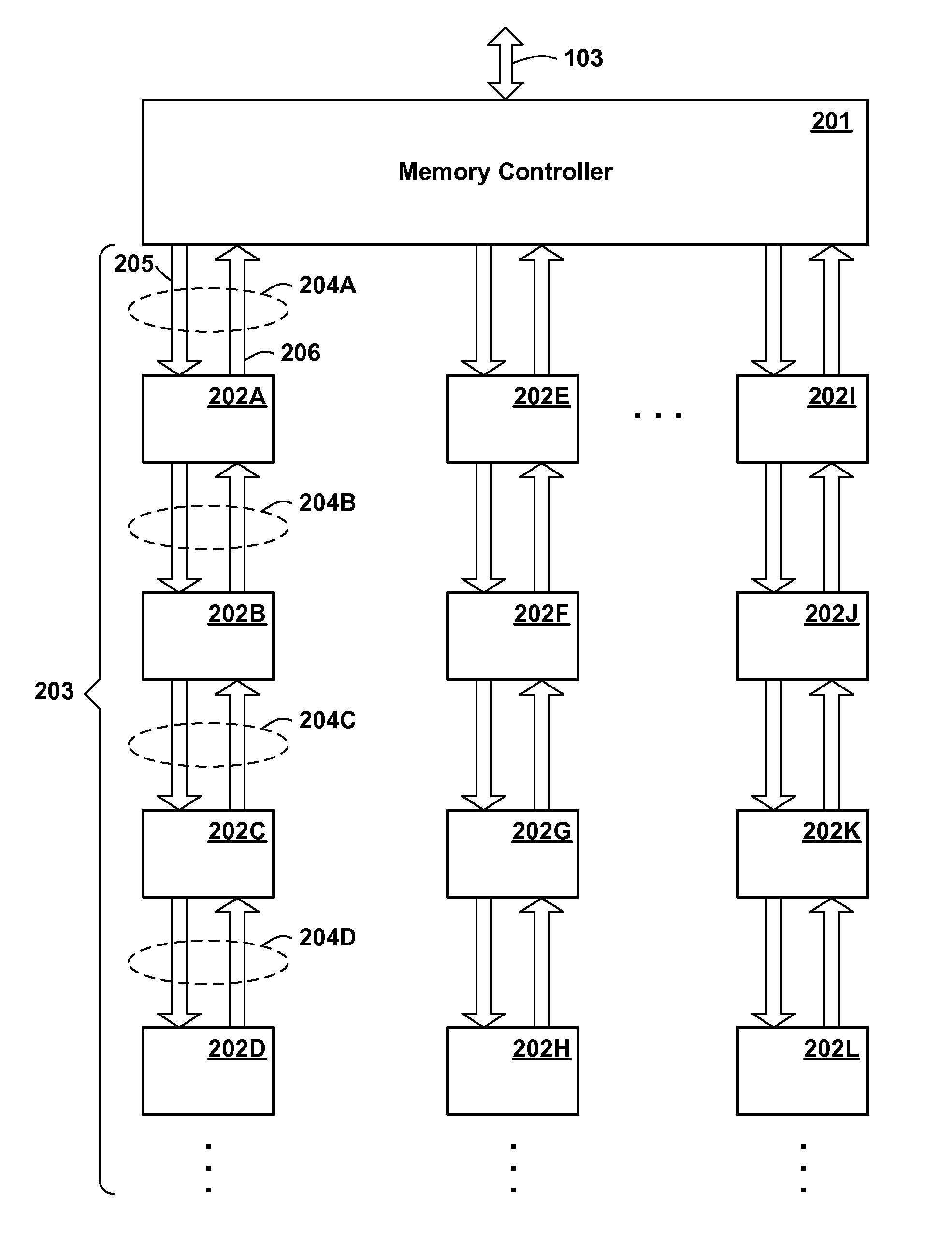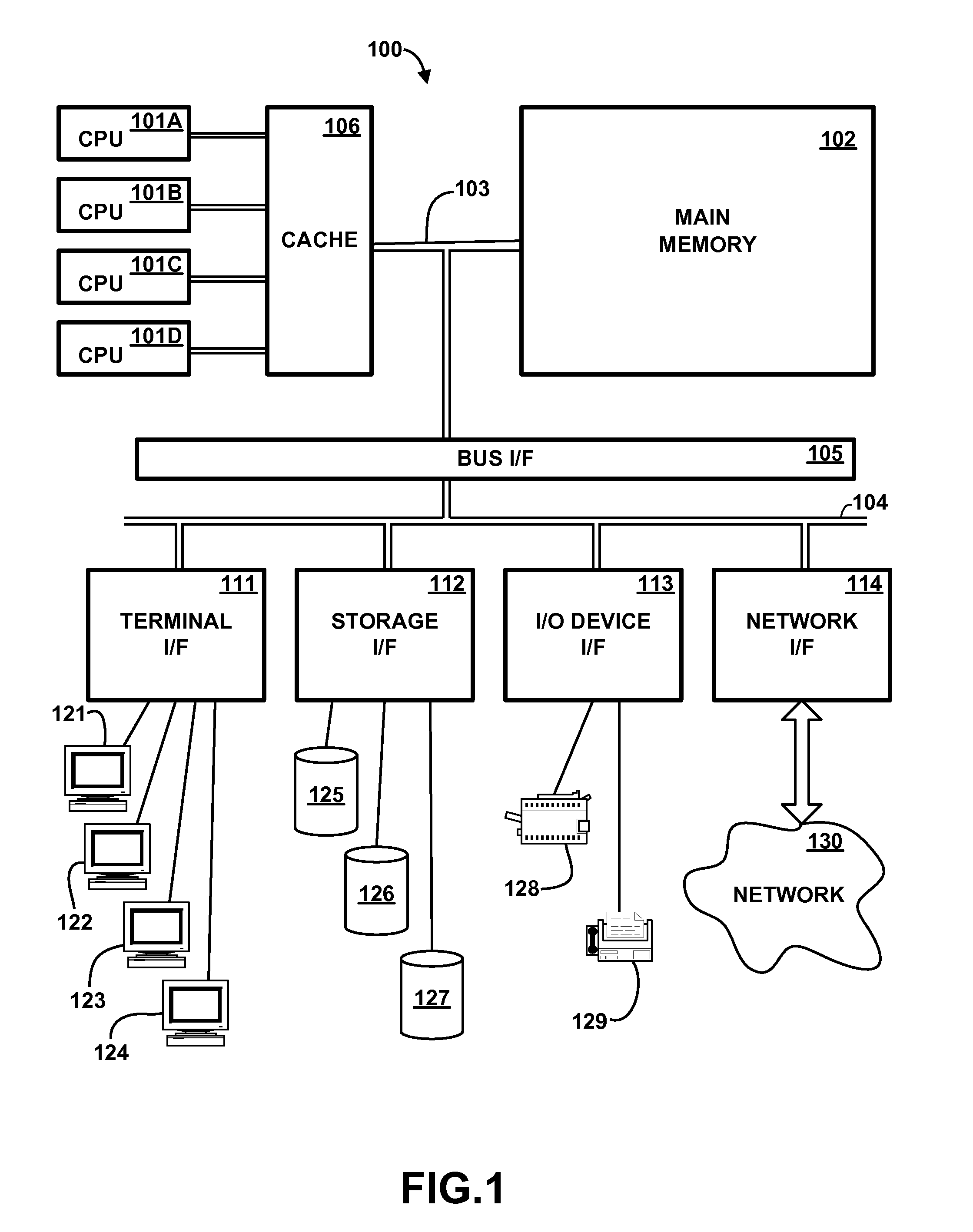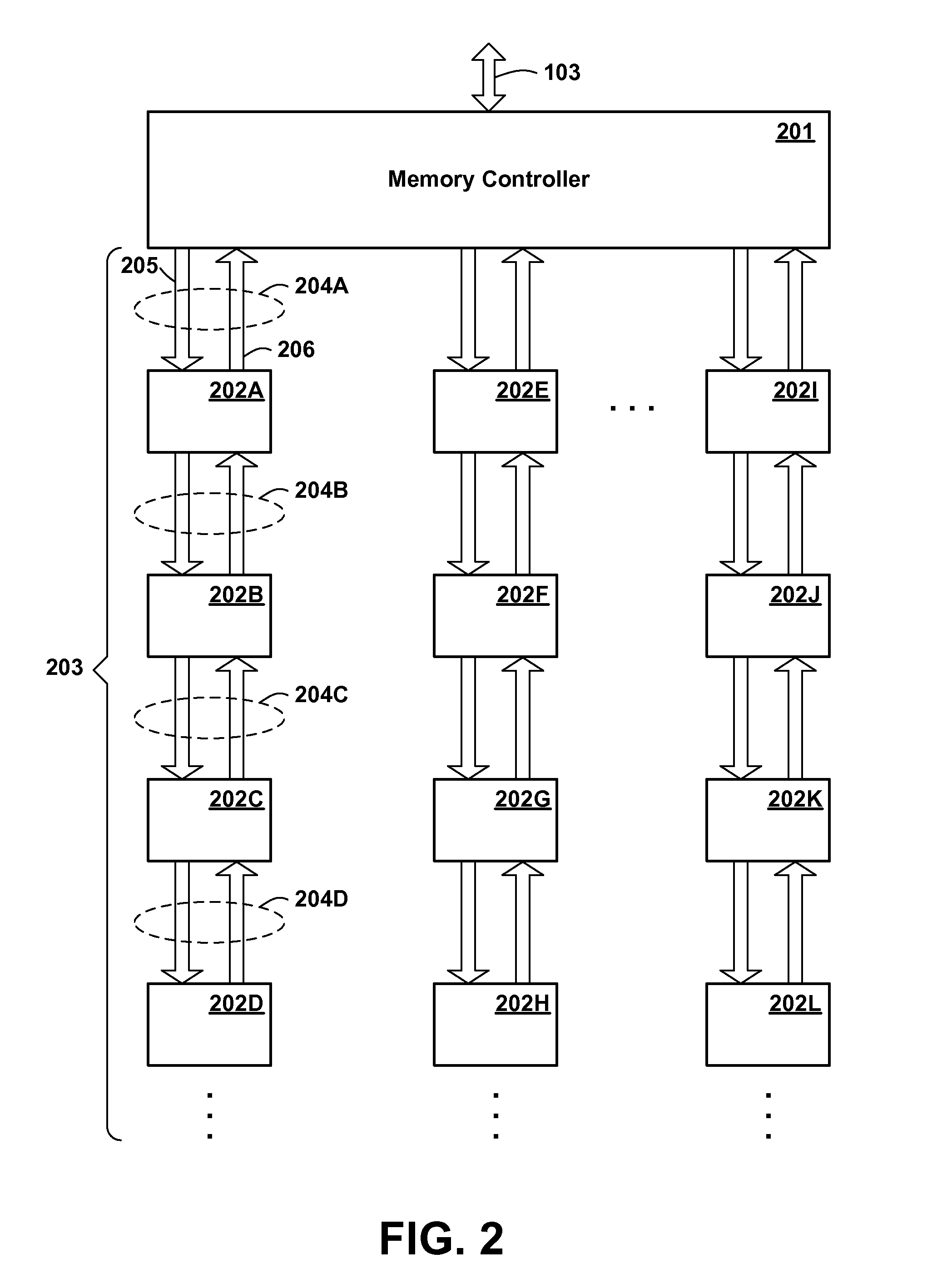Dual-Mode Memory Chip for High Capacity Memory Subsystem
a memory subsystem and dual-mode technology, applied in computing, instruments, climate sustainability, etc., can solve the problems of path consumption, inability to perform useful work, memory subsystem and speed at which it operates, etc., to reduce the number of i/o ports, reduce the frequency of bus operations, and save power
- Summary
- Abstract
- Description
- Claims
- Application Information
AI Technical Summary
Benefits of technology
Problems solved by technology
Method used
Image
Examples
Embodiment Construction
Future Memory Chip Overview
[0031]Low-end systems typically require large memory bandwidth, i.e. the ability to read and write a large amount of memory in a given time, but do not necessarily require large memory capacities. In order to meet these requirements, the present inventors envision a buffered memory chip and memory chip architecture supporting chains of memory chips. Such an architecture is described in the following commonly assigned copending patent applications, each of which is herein incorporated by reference: U.S. application Ser. No. 11 / 459,956, filed Jul. 26, 2006, entitled “Daisy Chained Memory System”; U.S. application Ser. No. 11 / 459,957, filed Jul. 26, 2006, entitled “Memory System Having Self Timed Daisy Chained Memory Chips”; U.S. application Ser. No. 11 / 459,969, filed Jul. 26, 2006, entitled “Carrier Having Daisy Chained Memory Chips”; U.S. application Ser. No. 11 / 459,983, filed Jul. 26, 2006, entitled “Carrier Having Daisy Chain of Self Timed Memory Chips”; ...
PUM
 Login to View More
Login to View More Abstract
Description
Claims
Application Information
 Login to View More
Login to View More - R&D
- Intellectual Property
- Life Sciences
- Materials
- Tech Scout
- Unparalleled Data Quality
- Higher Quality Content
- 60% Fewer Hallucinations
Browse by: Latest US Patents, China's latest patents, Technical Efficacy Thesaurus, Application Domain, Technology Topic, Popular Technical Reports.
© 2025 PatSnap. All rights reserved.Legal|Privacy policy|Modern Slavery Act Transparency Statement|Sitemap|About US| Contact US: help@patsnap.com



